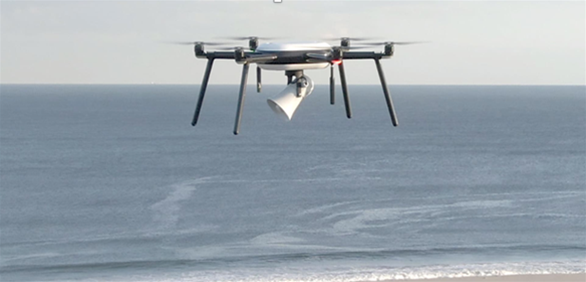As 5G deployments continue in the region, we are starting to see a shift in ICT spending from digital industries to physical industries like manufacturing and transportation. These “5G+” technologies will not only reshape the industrial landscape but grow global GDP by $8 trillion from now to 2030.
Across APJ countries like Japan, Nokia is working with the government and industry to develop the next-generation of industrial-strength wireless connectivity based on both 4G and emerging 5G technologies to create local private, reliable networks and lift traditional industries to their next level of productivity.
John Harrington, Head of APJ, Nokia, shares with iTNews Asia his thoughts on how he sees 5G evolving, how Nokia is growing its footprint and building its strengths in the 5G enterprise landscape.
iTNews Asia: Has the pandemic impacted the rollout of 5G for Nokia?
We continue to see opportunities. 5G has not slowed down because of the pandemic. Nokia (as of Nov 7) has already signed 204 5G commercial deals globally including 25 in APAC and 20 in APJ (excluding China and Taiwan).
Among these customers are SK Telecom, LG Uplus and KT in Korea, Softbank and KDDI in Japan, Indosat Ooredoo in Indonesia and TPG Telecom in Australia. Nokia was also recently selected by Spark to expand their 5G network in New Zealand and by M1 and StarHub to deploy a 5G SA network in Singapore.
iTNews Asia: How different are the challenges you face in this post-pandemic new normal?
Firstly, the traffic has changed. People want high speed broadband connectivity as they work from home. In the past, you can predict that network traffic will be higher during working hours but that is no longer the case now as they are always connected. We need to think about how we can maintain the robustness and security of the network. The performance indicators, for instance, should not just be downlink traffic, but also uplink traffic.
Secondly, large delivery and managed services are needed to deploy and maintain these networks. Wherever possible, we try to do that remotely as a managed service. We're also trying to digitise as much as we can, for example using software in process automation and analytics.
Thirdly is the impact to the supply chain and technology availability. We're having to forecast much further into the future now.
iTNews Asia: We tend to hype too much on 5G and what it can deliver. If you consider 4G, it’s only been around about 10 years. Service providers are still adding fibre and investing in their network infrastructure. While 5G is coming, there is still a lot that 4G can offer.
Many of us get infatuated with a new technology or device. Everyone wants the new iPhone 13 or Samsung device with the 5G logo. What 4G brought to consumers was high speed data on the devices, multimedia and video streaming. What 5G brings will be incremental, it will not a quantum leap by any means.
Where 5G will make the biggest difference is in the enterprise. 5G is not an 18-month device cycle, it's a 10-year era. Enterprises are trying to determine what are the right use cases and applications for their B2B environments.
In this area, Nokia is working in several vertical segments now – we’ve over 380 private wireless networks globally and they're not all 5G. We are trialling and testing what we can do in 4G, and what can we bring ultimately with 5G. Many of these are legacy physical environments which are moving to the next level of automation and productivity. These industries are very asset heavy and going through a digital revolution. There's a lot of old technology in ports, mining and factories that needs to be digitised.

We can’t really say that there is a killer application for 5G. There's still a lot of testing going on right now. Many say that 5G is the enabler for the fourth industrial revolution. I think COVID has accelerated the need for this transition. We’re now beginning to see the integration of operational technology (OT) and IT, and they are being brought together through software and 5G.
- John Harrington, Head of APJ, Nokia
iTNews Asia: Can you share some examples of the digitisation work that Nokia is working on?
In Japan, we are working with Toyota Production Engineering Corporation to create an industrial grade, private network that can help them transform their vehicle manufacturing, with the aim of designing innovative production processes.
Initially, a private LTE network will be deployed at TPEC’s site supporting a range of IoT-based devices that enable equipment digitisation. Over time, the network will be upgraded to 5G.
In the utility space, we're partnering with Hitachi Kokusai Electric to bring local 5G to enterprises and government users. In Sendai in Japan, we’re using drones, thermal cameras and alert systems to ensure public safety, provide emergency response and help with evacuations. We see a lot of these partnerships using remote control, robotics and more autonomous vehicles, bringing more automation to what they do.
We can’t really say that there is a killer application for 5G. There's still a lot of testing going on right now. Many say that 5G is the enabler for the fourth industrial revolution. I think COVID has accelerated the need for this transition. We’re now beginning to see the integration of operational technology (OT) and IT, and they are being brought together through software and 5G. That’s more exciting than a million more devices and faster consumer connections.
iTNews Asia: Globally, many APAC countries have clear 5G strategies and are moving quicker in deployments. Do you think governments here are more proactive, for example, in awarding spectrum and letting 5G happen faster in their infrastructure development?
I think so. Those leading in 5G appear to be more progressive as a nation or region. In Japan, for example, the government has allocated spectrum solely for local enterprises to deploy 5G. We already have more than 10 private wireless networks planned just for this.
The Japan government has been supportive in understanding that 5G can help their growth. Many of those physical industries that we’ve talked about have had very slow growth – particularly if you look at what's actually been digitised.

iTNews Asia: The transition to 5G appears gradual, with operators starting with enterprise mobile broadband, slower 5G before offering full SA 5G. 5G is more hybrid, first available to cities and co-existing with 4G networks in the suburbs and rural areas. We’re also seeing more partnerships and more operators sharing infrastructure.
In Singapore, the government has given a longer timeframe till 2025 for 5G to be fully rolled out.
There’s an understanding that it’s expensive to keep building these layers, and it's okay to fall back to a very robust NSA 5G layer or even to 4G. We have to see what spectrum and frequency is available. True 5G with millimetre waves don’t go very far, they have to be deployed carefully and surgically.
5G is a more dense-urban proposition and that’s where we see most of our customers starting. It depends on the frequency assets that they have. If they have low band spectrum it is more cost effective to roll out in suburban/rural areas.
Operators must decide if their strategy or value proposition is to have the widest coverage or highest speed. For example, in the US, T-Mobile is going for the widest coverage while for Verizon it is speed.
It’s also interesting to see the new market dynamics: governments, for example, who are looking at sustainability, building parallel networks and encouraging network sharing.
iTNews Asia: How has Nokia’s business strategy changed since the appointment of your new CEO last year? How has that changed Nokia positioning in APJ?
Nokia is a combination of several M&As and we have a very broad portfolio. Our new CEO, Pekka Lundmark has set a journey to deliver sustainable profitable growth; ensure we have technology leadership in the areas we compete; and to invest in whatever it takes to lead in 5G. He's since reduced operating costs and reorganised the company into four business groups to make it easier to work with.
Nokia has had a slow start but we're catching up. We've introduced several new products and increased our R&D. We're seeing more and more customers launch 5G with Nokia. Across our business groups, we’ve already overtaken Cisco in the service provider routing space and today we have one of the top two patent portfolios in 5G.
If you see our Q2 results, we’ve raised our guidance for the full year in terms of operating profits.
The thrust of the of the company is not just what we’re doing for traditional service providers, but what we’re doing for enterprise customers and those large conglomerates in vertical industries such as mining, oil and gas and transportation.
How have the changes helped Asia-Pacific? I don't have to go back to Finland or the US to get things done, the businesses are now regionalised and we can get things approved and agreed much more quickly. The company is more simplified now. The changes have improved our transformation, our profitability and our focus.
There is also a common theme of modernisation throughout the region. We’ve experienced the first wave of transformation in Japan/Oceania, and we can bring some of the learnings into the second wave in countries like Philippines, Vietnam, Thailand and Indonesia. We can help in the modernisation of their broader economies and infrastructure, and reduce their operational costs and complexity using advanced technologies.

iTNews Asia: Have you set any objectives or goals for Nokia in the region?
My first objective is to drive growth. We’re right now in an industry that is relatively flat. There's a lot of reasons for that, such as increasing competition and hyperscalers are coming in.
This growth might be with new customers, or it might be with new technologies with existing customers. It might also be in the enterprise space where we are seeing a lot more growth than the traditional service providers.
The second objective is to have strategies in every country to make sure that we represent Nokia as a brand, as an employer of choice and as a centre of innovation.
We also want to be more of a strategic supplier to industry, government and enterprises. We don’t want to be just selling boxes to service providers but become a part of the industries' technology transformation and evolution.
I want us to be easier to do business with, be agile and simply, to be better – in how we can reduce cycle time, optimise our processes and be more responsive to the customer.
iTNews Asia: What are some likely issues that the industry will face as we move into the next stage of 5G? Where do you see the technology evolving over the next three years?
We need to look at the architecture of 5G. 5G is not just about a faster radio connection. Do operators understand the edge cloud and how they're going to distribute information and content more effectively? Do they own that architecture? Do they compete with or cooperate with the hyper scalers and the data centres? In the old world, they had a switch in a base station but now that switch is software-driven. 5G is raising the question: “How do I transform to this digital service provider?”
On our end, we’re working with AWS, Google and Microsoft and telling them that we don't have to supply the physical equipment. Our software stack can run on any operating environment – we can run it on the public or the private cloud. We can use 5G in things that were wired before or running on very old OT, and integrate IT into that. We can help industries with their architectural evolution.
It will not always be perfect and it will take several years for enterprises to fully transform.
.jpg&w=800&c=0&s=1)








